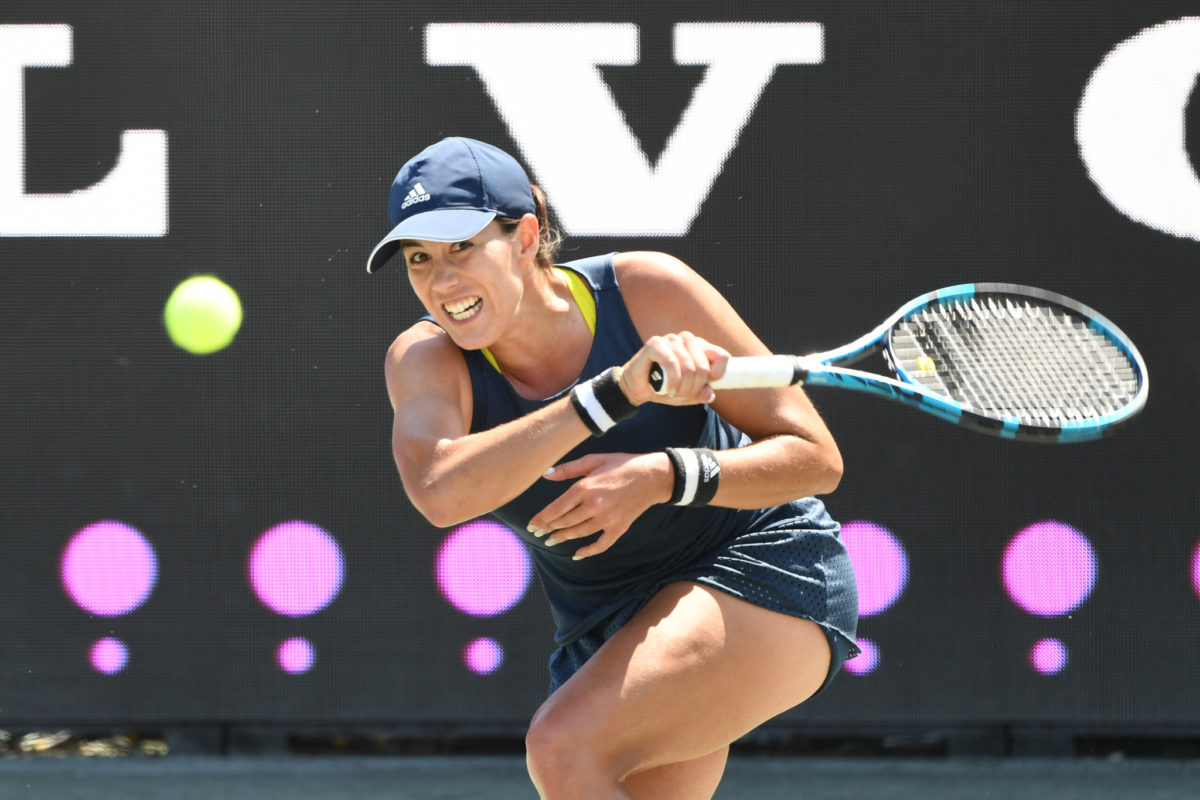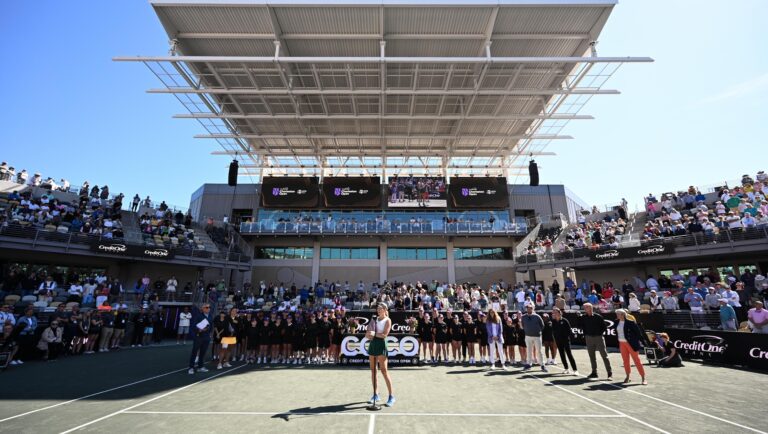ZONING MUGURUZA STAYING OUT OF ‘DARK SPACES’

DESPITE INEXPERIENCE ON GREEN CLAY, TWO-TIME SLAM CHAMP FINDING FOOTING AT CHARLESTON OPEN
No one has won more matches on the WTA Tour in 2021 than Garbiñe Muguruza, who, after a dominant 6-1, 6-3 dismissal of Polish qualifier Magdalena Frech in the second round of the Charleston Open, is now 21-5 on the year.
That industry-best run includes three finals and a WTA 1000 title at the Dubai Duty Free Tennis Championships in March.
It shouldn’t come as a surprise to see the Spaniard performing at such an elite level. She’s a two-time Slam champion and former No. 1, after all, having won Roland Garros in 2016 and Wimbledon in 2017, and now owns eight career singles titles. But Hall of Fame resume aside, she admittedly struggled to find day-in/day-out consistency in her game the last few years.
“I don’t think I have a different approach. I feel like I have the same attitude, the same spirit. But I definitely have more experience,” said Muguruza, who was born in Caracas, Venezuela, but plays under the Spanish flag (her mother, Scarlet, hails from Venezuela; her father, José Antonio, is from Spain). “I think that’s key to my perspective more and more. The wins and losses are more acceptable once you get more mature. In general, it’s knowing myself more, knowing how I have to work, how I have to act and proceed in order to point myself in the right direction earlier than before. I would say it’s experience more than anything else.”
In previous years, a loss might have stayed with her for days. Now 27, she says those inevitable tournament-to-tournament setbacks are easier to digest.
“Not because I accept them or anything like that,” she cautioned. “It’s just that I waste less energy on being upset or being disappointed. I quickly get out of any bad energy. I just start thinking about what I have to do next. I don’t stay in dark spaces anymore.”
A Top-10 regular in the year-end rankings between 2015 and 2017, when she topped the WTA charts, Muguruza fell out of the Top 30 in 2019, a year that included half a dozen first-round exits, Wimbledon and the US Open among them. Now in her second stint with coach Conchita Martinez, the woman who once summited Mount Kilimanjaro says she no longer frets about ranking climbs.
“I feel like I stopped thinking about rankings a while ago,” she said. “Before, when I was in my early 20s, I was thinking, ‘I want to achieve this number, this ranking.’ Now I feel like I’ve been every number. It really doesn’t matter. In the end, it’s just about holding the trophy and being in the finals that matter. I stopped thinking about the ranking and started focusing on playing well, getting to the late rounds. Then the ranking will come. You’ll have a nice number.”
With her return to Charleston after an eight-year absence, she’s entering her favorite time of year: clay season. It’s the surface she learned the game on, the surface upon which she had her first major success. But even Muguruza will tell you that the green clay of the LTP Daniel Island Tennis Center is a whole different beast than the red clay she’s grown so accustomed to back home in Europe.
“It’s similar from the outside, but as tennis players, we feel everything,” she said. “You don’t slide as easily as on red clay. This clay is a little bit more compact. That’s probably the biggest difference. Also, the bounces are a little bit tricky.”
Fortunately for Muguruza, her coach knows a thing or two about what it takes to win here. Martinez famously won back-to-back Charleston Open titles in 1994 and 1995, when she was the No. 2 player in the world.
“We’ve talked a little bit about it,” said Murguruza. “She loves this tournament, of course. She won it twice. She loves the city. She talked a lot about downtown Charleston and all these places that I have to go. I said, ‘Well, Conchita, not this year [due to the COVID-mandated bubble], we’re not going anywhere.’ But we just talked a little bit about the surface and how she felt as a player.”
It’s an emotional connection, really, Muguruza’s love of clay, be it red or green.
“It’s a combination of growing up playing on clay as a kid in Spain,” she explained. “I spent so many hours running on those courts, side to side. I feel hard courts are very straight. Everybody plays well. Everything is short and fast. Clay courts allow you to develop more, do more, have more time. It can go against you or with you, it doesn’t really matter. But that’s the way I started to play tennis, learning how to play the points, to add different strategies to the game. Of course, lifting my first Grand Slam on a clay court makes a huge impact. I grew up and had my first big success on the same surface. It feels like something so familiar to me.”
Muguruza’s next test in Charleston will come in the form of 11th seed Yulia Putintseva in the Round of 16 on Thursday. She’s 2-0 against the Kazakh, including a win on the terre battue of Roland Garros in 2017. The No. 6 seed will tell you that, given her relative inexperience on green clay, she doesn’t have much in the way of expectations. She’ll just rely on her fighting spirt.
“Sometimes that’s all you need to get through these first rounds.”






































 WTA Rank: 24
WTA Rank: 24